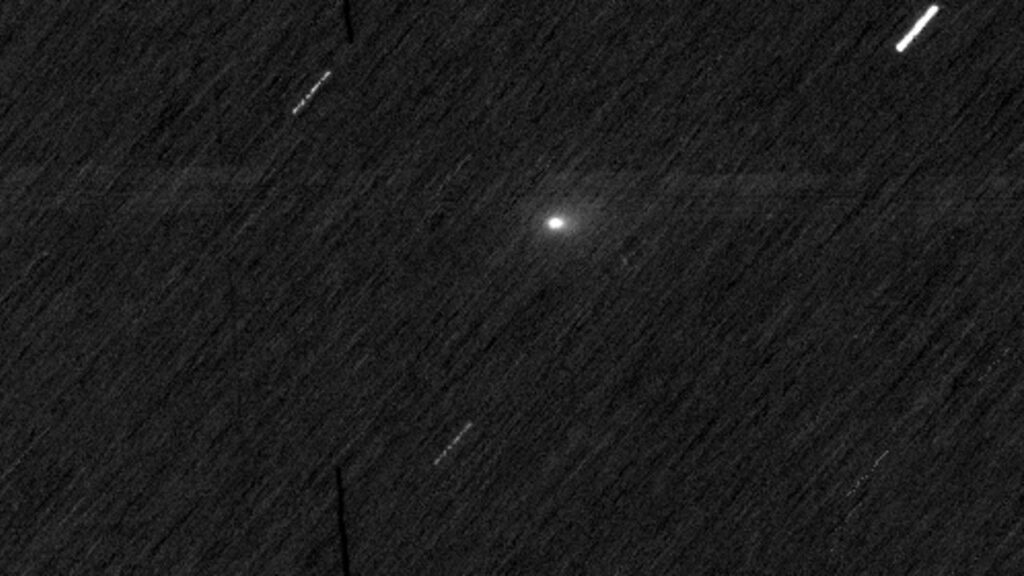
A European Mars probe successfully observed the interstellar comet 3I/ATLAS as it passed close to the Red Planet on October 3, 2023. The comet came within approximately 19 million miles (30 million kilometers) of Mars, providing a unique opportunity for scientists to study this celestial visitor.
The European Space Agency’s (ESA) ExoMars Trace Gas Orbiter (TGO) was equipped to capture this rare event, using its Colour and Stereo Surface Imaging System (CaSSIS). Principal Investigator Nick Thomas highlighted the significance of this observation, stating, “This was a very challenging observation for the instrument. The comet is around 10,000 to 100,000 times fainter than our usual target.”
3I/ATLAS was first identified in July 2023 by the Asteroid Terrestrial-impact Last Alert System (ATLAS) telescope located in Río Hurtado, Chile. As the third confirmed interstellar object detected within our solar system, following 1I/’Oumuamua in 2017 and 2I/Borisov in 2019, 3I/ATLAS presents astronomers with a wealth of information about its origins. ESA officials noted, “Interstellar comets are true outsiders, carrying clues about the formation of worlds far beyond our own.”
Scientific Insights from 3I/ATLAS
The observations of 3I/ATLAS suggest that it may be the oldest comet ever observed, with an estimated origin that predates our solar system by approximately three billion years. This ancient comet carries secrets of the cosmos that could enhance our understanding of planetary formation and evolution.
The TGO’s observations were part of a larger ESA initiative to study 3I/ATLAS as it traverses the solar system. The agency’s Mars Express orbiter, operational since 2003, also attempted to photograph the comet on the same day. Although the Mars Express images have not yet resolved 3I/ATLAS, the shorter exposure time of just 0.5 seconds limited its ability to capture the faint comet compared to TGO’s five-second exposure.
Colin Wilson, the project scientist for both Mars Express and ExoMars at ESA, expressed enthusiasm for the unexpected opportunity, stating, “Though our Mars orbiters continue to make impressive contributions to Mars science, it’s always extra exciting to see them responding to unexpected situations like this one.”
Future Observations of 3I/ATLAS
Further observations of 3I/ATLAS are planned as it continues its journey through the solar system. The ESA’s JUICE (Jupiter Icy Moons Explorer) probe, en route to Jupiter, is set to begin observing the comet on November 2, 2023. This date is notable as it follows the comet’s closest approach to the sun, which will occur at a distance of 130 million miles (210 million kilometers).
At this point, 3I/ATLAS is expected to be in a more active state, potentially allowing JUICE to capture clearer images of the comet. These observations will contribute to the growing body of knowledge regarding the origins and characteristics of interstellar objects.
As astronomers continue to study 3I/ATLAS, the insights gained could illuminate not only the nature of this comet but also the broader processes that shape our universe. With each new discovery, the mysteries of these interstellar visitors become a bit clearer, offering a glimpse into realms far beyond our own solar system.







